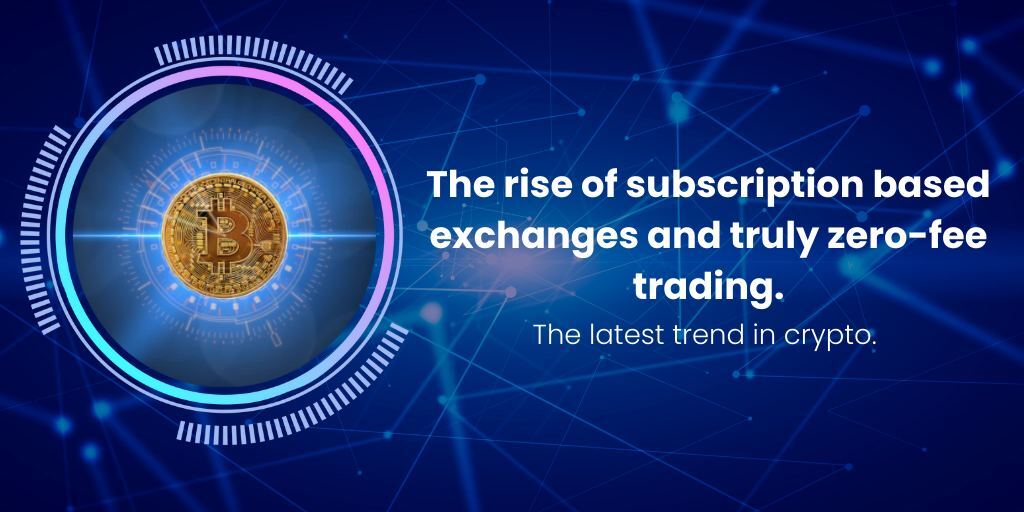For as long as crypto has been around, exchanges have followed the pay-per-trade model, charging customers a percentage of every trade and growing into giants among crypto holders.
However, over the years, we have seen many companies move to subscription models, and today, subscription has become a norm but not in crypto – at least, not yet.
We used to watch movies at the cinema and later buy cassettes or DVDs. Then Blockbuster started renting, and now we have Netflix and Prime Video, where viewers pay a monthly fee to watch as much as they like. The subscription model extends far and wide into music (Spotify), shopping (Amazon) and even vehicles (lease hire), with the sale coming down to how much we can save and how much more we can gain.
Exchanges like Bifinex, Kraken and others, along with the relative newbies such as Binance and FTX, have provided an easy way for people to enter and exit the crypto market, acting as catalysts for crypto growth. And their model, pay-per-trade, has indeed served them well, with several becoming some of the largest crypto holders today.
But disruption is inevitable, and history says that people´s loyalty quickly shifts when a better deal comes around.
Below we address why zero-fee trading (without a subscription) is a fallacy 99% of the time and what users should be aware of. Then, we highlight the subscription-based exchange contenders that we can find and touch on the pros and cons.
Zero fees or ´hidden´ fees?
Money makes the world go round; businesses are not charities, and running an exchange is expensive. However, we have an increasing number of platforms marketing zero-fee trading?
Potential customers hear a nice-sounding sales pitch, and they´re in. However, upon deeper inspection, it is usually just a sales pitch!
While zero-fee may seem great at first, you are almost certainly paying somewhere. It may be that prices are above average due to an ´invisible´ spread or otherwise. No matter the truth, with a bit of investigation (sometimes just reading more), you are likely to find that you are paying fees, just maybe not directly.
Although these solutions can tick various boxes, we encourage users to air on the side of caution because what sounds too good to be true often is. However, having said that, if you don´t mind ´hidden´ fees increasing the price slightly, these offerings may be well suited for your needs.
Bring on the subscription-based exchanges!
A subscription-based exchange is a different story since the subscription is the revenue that enables the business to operate without having to take a commission on trades, presumably.
And although there are not many yet, we do have some exciting options on the horizon.
Coinbase
Coinbase is trialling a subscription model (in Beta for limited numbers) called Coinbase One, where users pay a fee to access special features, $30 per month, according to rumours.
Pros: Subscription-based zero-fee trading, account protection & priority support. Well-established and full exchange functionality.
Cons: Limited pairs and no guarantee it will roll out to the entire user base (if at all).
Eve Exchange
Eve is a new exchange startup (launching soon) where users will pay $19.99 for a monthly subscription or use it as a typical exchange with trading fees.
Pros: Subscription-based zero-fee trading, user-to-user transfers. They are using Fireblocks wallets and have full exchange functionality.
Cons: Coin/token support unknown and new project.
Can Coinbase, Eve and others that we are sure will spring up disrupt the pay-per-trade model?
The answer to this question is unknown until it happens (or doesn´t). However, we know that subscription has worked well in many other industries, and believe it to be only a matter of time until crypto catches up. It could be a fast shift because, as said earlier, people are quick to shift if the benefits are substantial enough.
Aside from knowing what you are paying each month and unlimited trading volume, we would like to highlight one indirect benefit of the subscription-based exchange concept that you might not think about right away. And that’s order book depth & trading activity.
When fees are low, people trade more; the success of Binance should be evidence enough of this.
On that note, we will end with a few questions for you to ponder:
What if subscription-based exchanges take off? What if current exchanges don´t adapt? What if you can trade as much as you like for a single monthly fee?
We will monitor the rise of subscription-based exchanges with keen interest and report back on our findings as time goes by.

